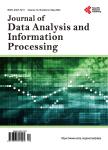Time Series Analysis of Energy Intensity, Value Added Tax and Corporate Income Tax: A Case Study of the Non-Ferrous Metal Industry, Jiangxi Province, China
Time Series Analysis of Energy Intensity, Value Added Tax and Corporate Income Tax: A Case Study of the Non-Ferrous Metal Industry, Jiangxi Province, China作者机构:School of Statistics Jiangxi University of Finance and Economics Nanchang China Division of Biostatistics and Data Science School of Public Health The University of Texas Health Science Center at Houston Houston USA Department of Mathematics Computer Science and Cooperative Engineering University of St. Thomas Houston USA
出 版 物:《Journal of Data Analysis and Information Processing》 (数据分析和信息处理(英文))
年 卷 期:2019年第7卷第3期
页 面:108-117页
学科分类:1002[医学-临床医学] 100214[医学-肿瘤学] 10[医学]
主 题:China Taxation Co-Integration Models Energy Consumption Granger Cau-sality Test Time Series Analysis
摘 要:Unprecedented industrialization and urbanization have led to China’s poor energy efficiency. In response, the Chinese government has set goals to reduce energy consumption that may include implementing new tax policies. In this paper, we investigate the relationship between energy intensity, an indicator that measures the efficiency of energy consumption, and two sources of government revenue in China (i.e., value-added tax (VAT) and corporate income tax). As a case study, we developed a Granger co-integration model to analyze the dynamic relationship of energy intensity, VAT and corporate income tax in the non-ferrous metal industry, Jiangxi Province, China, between 1996 and 2010. Augmented Dickey-Fuller tests were used to validate the model. In our time series analyses, we found when controlling for corporate income tax, a one log unit increase of VAT resulted in a decrease of 1.17 log units of energy intensity. However, when controlling for VAT, a one log unit increase of corporate income tax resulted in an increase of 0.34 log units of energy intensity. Understanding the relationship between energy intensity and taxation in industries that consume high volumes of energy can greatly enhance China’s goal to reduce energy consumption. We believe our findings add to this on-going discussion.



